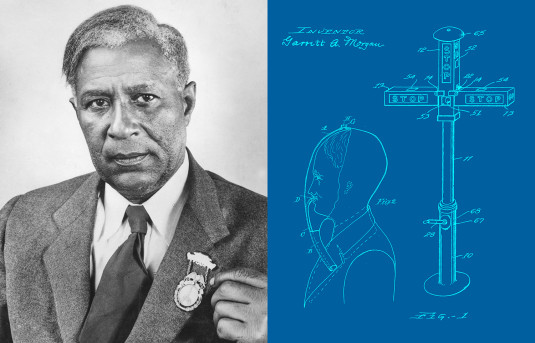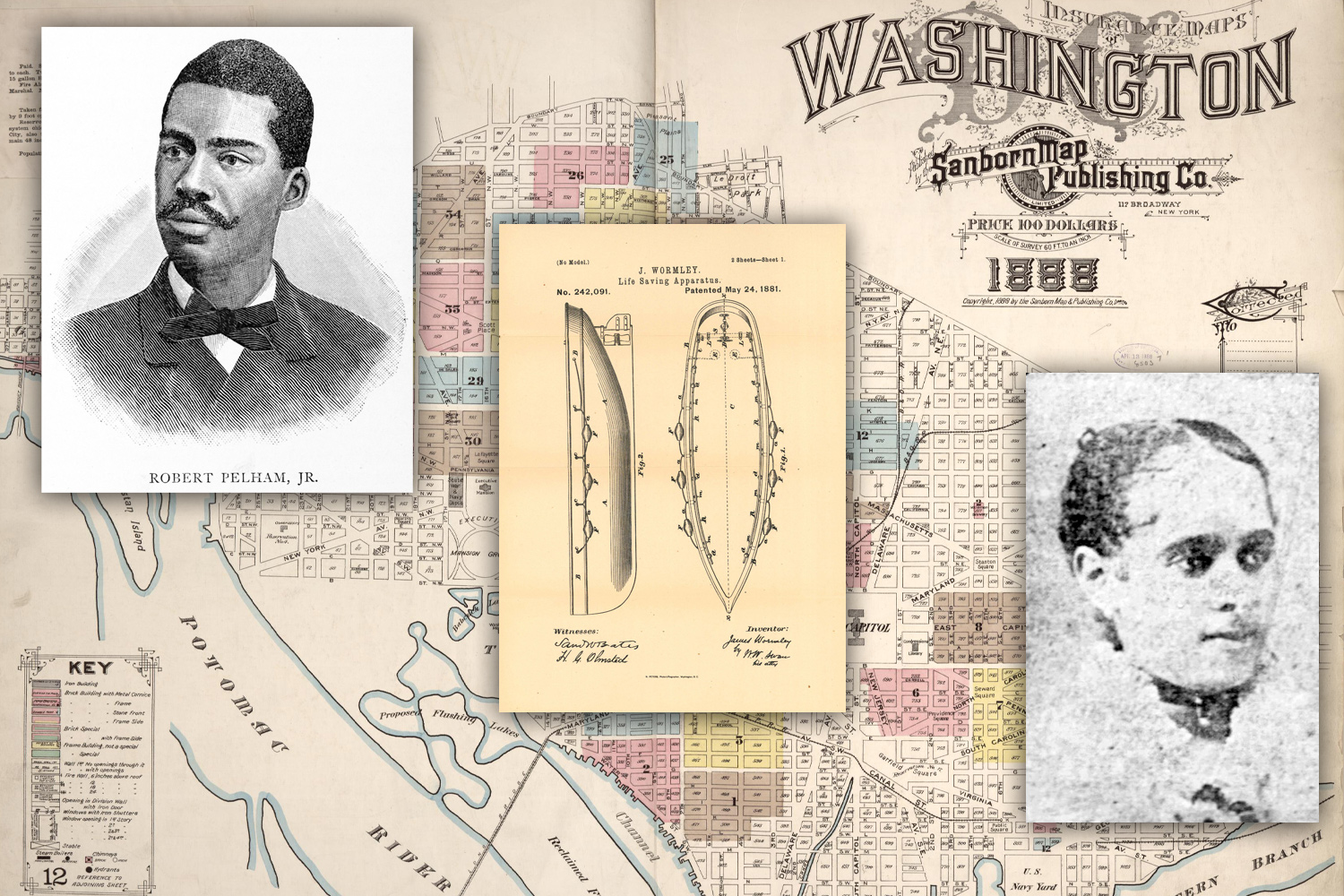
A district of determination
Inventors James Wormley, Miriam Benjamin, and Robert Pelham had a great deal in common. They were all determined individuals who saw a problem and, using their ingenuity and skills, sought a solution. For a time, they were all part of an emerging middle class of African American entrepreneurs, professionals, and civil servants living in the nation’s capital. And they all appeared on Henry Baker’s list of Black patent holders, a list that helped fuel a growing civil rights movement.
19 min read
Each month, our Journeys of Innovation series tells the stories of inventors or entrepreneurs who have made a positive difference in the world. Last February, we explored patent examiner Henry Baker’s work to chronicle African American inventors. This month, Rebekah Oakes’ story delves into the lives of some of the people on his list.
Do you know an innovator or entrepreneur with an interesting story?
Spanning nearly half a block on the corner of 15th and H Street N.W., the sturdy, brick Wormley Hotel was located in the heart of D.C. society in the late 1800s. The headquarters of Riggs Bank, a financial institution so prominent it was referred to as the “Bank of Presidents,” resided down the street. Patrons could easily stroll through Lafayette Square, attend a service at St. John’s Episcopal Church, or — given the proper invitation — enjoy a conversation with preeminent intellectuals and community leaders at the Cosmos Club, a private social venue for science enthusiasts. For those creatively inclined, the Corcoran Gallery of Art and the National Theater were within a few blocks, as was the White House itself. This location, alongside the outstanding hospitality the Wormley was known for, attracted all kinds of clientele, from members of Congress to ambassadors to business tycoons.
This was all the more exceptional given that James Wormley, the hotel’s proprietor, was not permitted at the Cosmos Club, nor was he able to sit wherever he liked at the National Theater. Wormley was a Black man living in a city where many facilities were segregated by race.
Less than a mile away, among the rows and rows of patent models stored at the Patent Office, was a gong and signal chair invented by Miriam Benjamin. The chair, which allowed the user to quietly call for assistance while remaining seated, had a number of potential applications. Patrons staying at hotels like the Wormley could call for a waiter or attendant, as could passengers waiting in a railway station or patients at a hospital. Benjamin estimated that her invention could cut down the number of attendants needed by 30% to 50%.
Taking an active role in marketing her chair, Benjamin lobbied for its use by the House of Representatives, a legislative body that was not representative of people like her. In 1888, the year Benjamin received her patent, none of the elected members were women and very few were Black.
A good deal of what historians know about African American entrepreneurs and inventors like Wormley and Benjamin comes from census data. At the turn of the 20th century, clerks at the Census Bureau, then headquartered in southwestern Washington, D.C., were expected to accurately process hundreds of census schedules per day. Robert Pelham, who had an exceptional mind for improvements, took this on as a challenge. Two years into his tenure at the Census Bureau, he set a new record by tabulating 1,150 schedules in one day.
The previous record? 591.
Just three years later, at a time when many newspapers were printing articles questioning the intellectual capabilities of Black men like Pelham, he received a patent for a device that made his work even more efficient.
“Indeed, it is difficult to recall a single feature of our national progress along material lines that has not been vitalized by the touch of the inventor’s genius.”
Miriam Benjamin, James Wormley, and Robert Pelham had a great deal in common. They were all originally from below the Mason-Dixon line, born free during the era of enslavement. They were all determined to succeed and build generational wealth and came from families who resolved to do the same. For a time, they were all part of an emerging middle class of Black entrepreneurs, professionals, and civil servants living in the nation’s capital around the turn of the 20th century. And they all appeared on patent examiner Henry Baker’s list of Black inventors.
As part of his work to record the inventive genius of Black Americans, Henry Baker surveyed thousands of people across the nation, ranging from fellow patent examiners to attorneys to business leaders. He also leveraged his network as a prominent member within his own community, and several inventors with a Washington, D.C. address appear on his list.
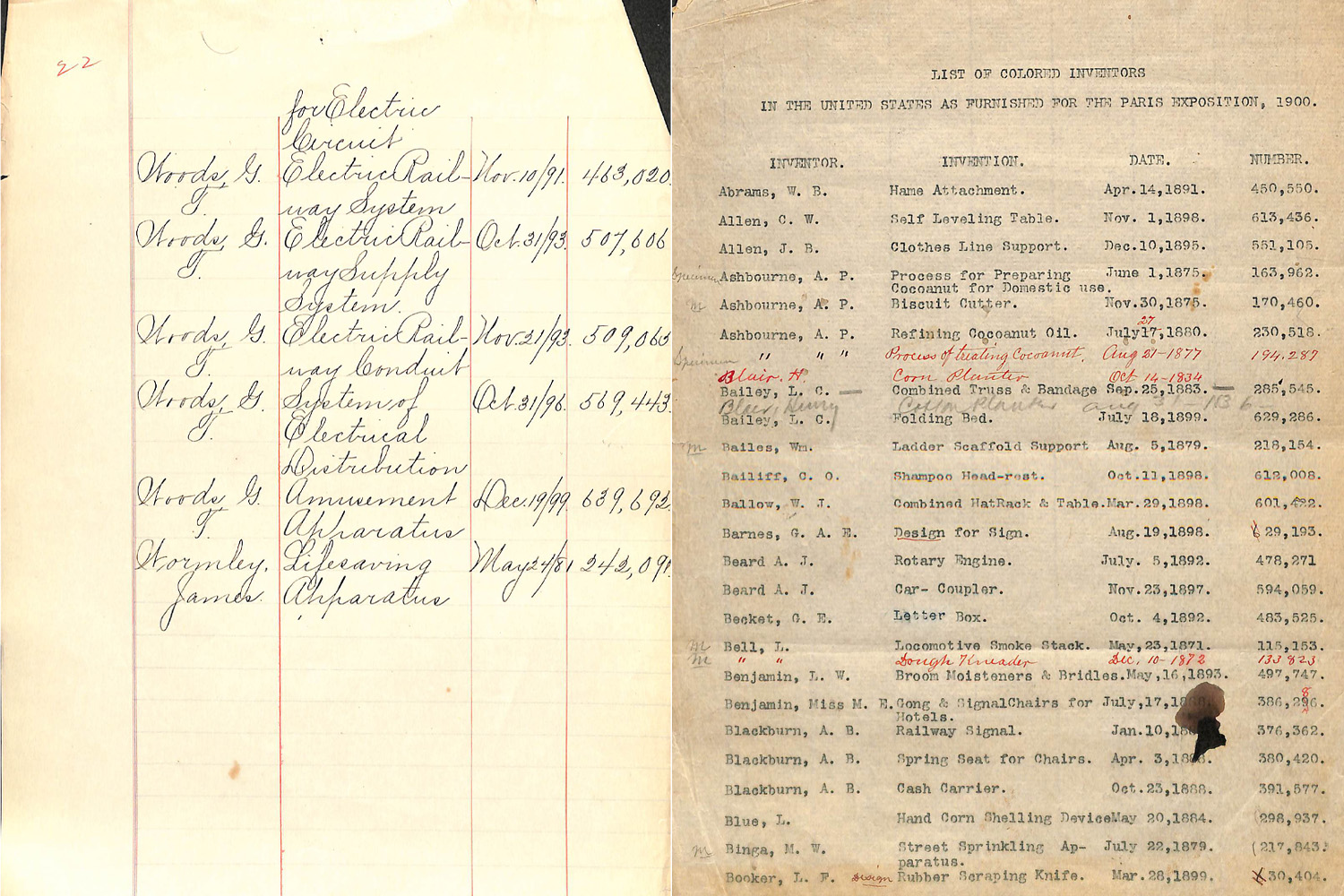
James Wormley’s name appears on Baker’s hand-written list from 1899, and Miriam Benjamin’s name was included in the list he sent to the 1900 Paris Exposition. Robert Pelham appears on a 1913 version of the list.
(Courtesy of the National Archives and Records Administration).
For Black Americans in the decades following the Civil War, Washington, D.C. was a place of opportunity. There were jobs — good, well-paying jobs in the fields of education and civil service, as well as opportunities in the service industries supporting the growing federal government. Within this thriving urban community, residents could make connections through churches, social groups, and scholarly societies, and read newspapers dedicated to sharing information relevant to the Black community. Here, Black men could vote in local elections three years prior to the 15th Amendment extending that right nationwide.
Life was not perfect, however. The nation’s capital was marred by the scars of enslavement, and financial and social barriers remained for African Americans looking to buy homes and start businesses. Many private facilities were segregated by race, and as the decades wore on, many public ones would be as well. But the population of Black residents in Washington, D.C. grew by tens of thousands in the latter half of the 19th century, and by 1900, the city had the largest percentage of Black residents in America. Black-owned businesses and institutions became fixtures, with an indelible benefit for the community as a whole.
As a long-term resident of the capital city, Baker would have undoubtedly been familiar with one of these fixtures: the Wormley Hotel. The establishment’s namesake, James Wormley, was born within the District of Columbia in 1819. His parents, Lynch and Mary, moved to the capital city by necessity just five years prior, as manumission laws in their home state of Virginia required freed people of African descent to move out of the state. His father established a business boarding horses on Pennsylvania Avenue, and young James began his own career driving a hack, or horse-drawn coach, providing a valuable transportation service for residents and visitors to D.C. akin to a modern taxi. Wormley’s determination and dedication to excellence helped him push up against the color line, as did his status as a freedman in a city where enslaved residents labored to build the nation’s infrastructure for the majority of his life.
Wormley’s experience as a hack driver gave him more than financial compensation; it was an invaluable opportunity to hone his interpersonal skills, with a literal front-row seat to conversations between legislators and community leaders. These were all lessons Wormley took with him as he entered the hospitality industry as a young adult, serving as a steward on several steamships as well as at prominent social clubs within the city. In the 1850s, he established his first restaurant and hotel business in a set of row houses along I Street, acquiring both a local and international reputation for hospitality. By the time he opened the Wormley Hotel in 1871, his services were already a staple within the city
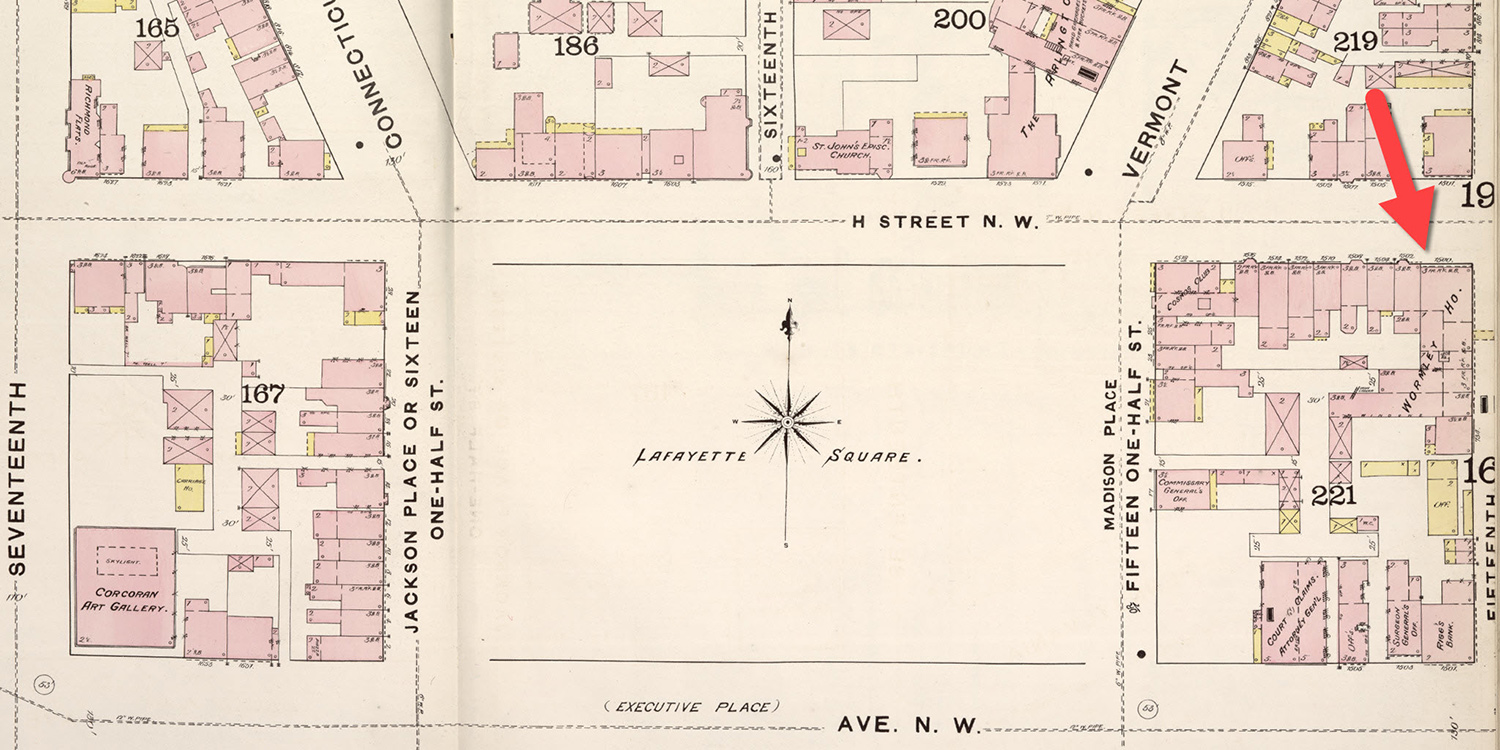
This Sanborn Fire Insurance map from 1888 shows the proximity of the Wormley Hotel to other landmarks and prominent institutions in Washington, D.C.
(Courtesy of the Library of Congress).
Spending time at sea may also have led to Wormley’s foray in inventing. In 1881, he received a patent for a life-saving apparatus for ships consisting of “a number of floats attached to the free end of a rope,” which combined with a sliding rod on the ship’s side that could be controlled by a hand-lever near the wheel. Wormley’s name appears on early versions of Baker’s list, and it is likely the two engaged in similar social circles, if not personally acquainted.
His patent was evidence of his ingenuity and determination to improve the quality of life for those around him, but Wormley’s true legacy was in entrepreneurship. Described as one of the “most successful and highly regarded hotel proprietors in the city” in an article about the landscape of early 15th Street, the Wormley was consistently listed as the lodging of choice for Congressmen and Senators in the 1870s and 1880s. Foreign dignitaries, up to and including the King of Spain, availed themselves of the impressive dining rooms, menus consisting of local delicacies like terrapin and oysters, and the courteous staff. The hotel’s finely decorated parlors were the backdrop for conversations about the most pressing political issues of the time, between the most important national leaders of the time.
All of this, built by a Black man born free, in a city of contradictions.
When James Wormley died from complications following a surgical procedure in 1884, many of his competitors lowered the flags on their hotels in deference.
“The list of guests entertained there include many of the most eminent men of the day in every walk of life … His strict business integrity won for Mr. Wormley the confidence and friendship of the wealthy and influential citizens of Washington.”
The Patent Office did not collect demographic data, and Henry Baker faced an uphill battle ascertaining the races of past patent holders. For someone well-known, like James Wormley, it was easy. But what about those without a sizable public presence?
Listing the various ways he overcame this challenge, one of the simplest methods was taking note of who walked through the door of the Patent Office. It is likely that Miriam Benjamin fell into this category, as she not only received a patent for her own invention but served as the attorney on record for at least two others.
Benjamin was born in the cradle of secession — South Carolina in 1861, the first year of the Civil War. Details of her early life are limited, but she was born free, and apparently to a family of some means, as she received an education at a Massachusetts state normal school. Her career as an educator took her first to Florida and then to Washington, D.C., where she joined a thriving community of middle-class Black professionals in the nation’s capital. After passing her civil servant’s examination, she applied for and received her first patent, for the Gong and Signal Chair, in 1888.
She was unsuccessful in her efforts to convince the House of Representatives to adopt her technology — a similar but more complex system was later installed — but her name was read into the Congressional Record by Representative George Washington Murray as he advocated funding the Cotton States Exposition. Murray was successful, and Benjamin’s patent model was sent to Atlanta, Georgia for the Cotton States International Exposition, along with four of Murray’s own inventions.
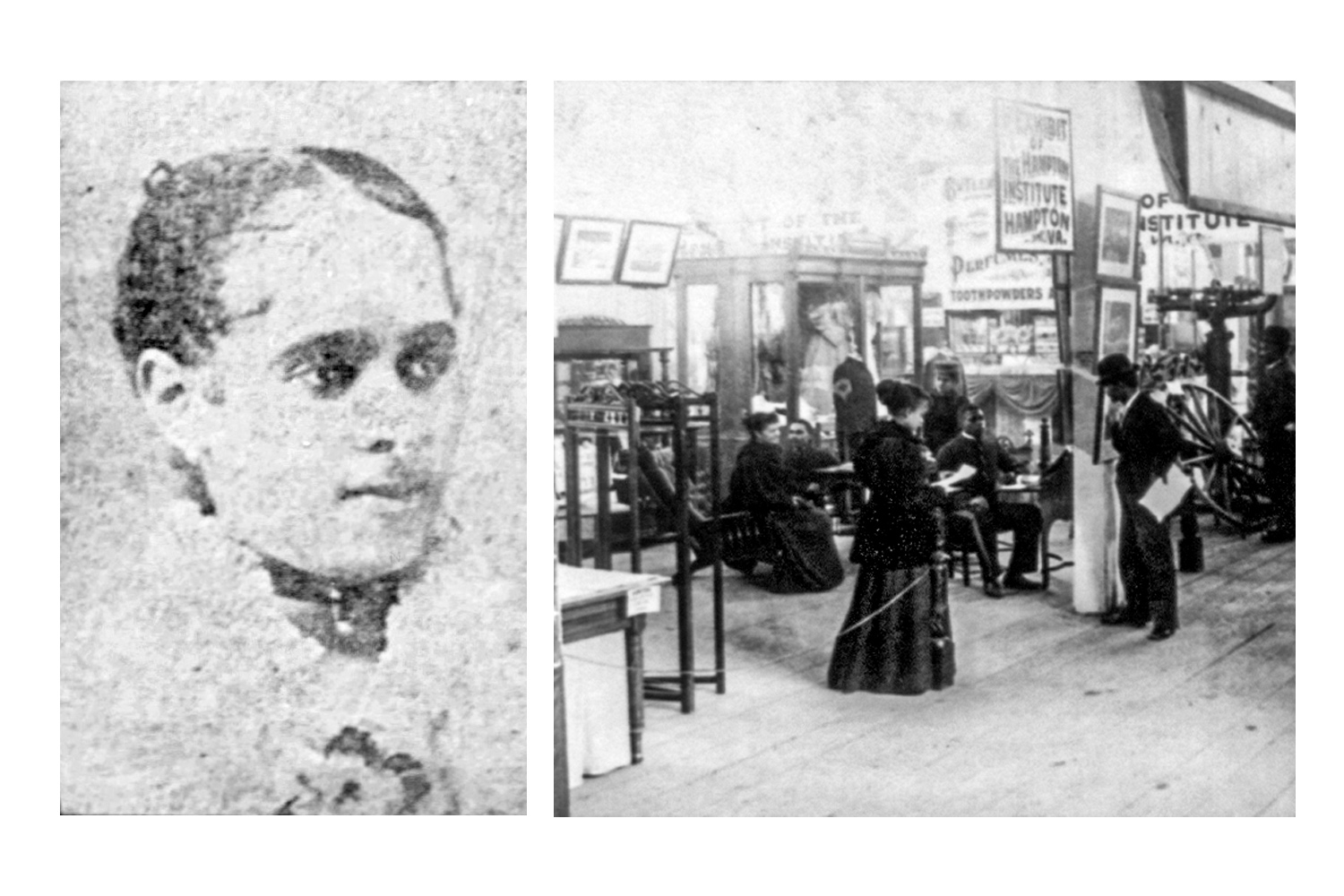
Miriam Benjamin was one of the most well-known female Black inventors of her time, and her patent model on display in Atlanta attracted press coverage.
(Image of Benjamin courtesy of Newspapers.com. Photo of the interior of the “Negro Building” courtesy of Library of Congress).
Spanning nearly the length of a football field and over 100 feet wide, the “Negro Building” at the Cotton States International Exposition was more than merely a display of prominent African American educational institutions and business ventures. It was an opportunity to counter prevailing myths about the intelligence and contributions of Black citizens in the Jim Crow South.
“We are the negros of the United States, and we hope to convince our paler fellow citizens that we are doing something for the country,” an unnamed man told a reporter from the Harrisburg Telegraph.
Over the course of 15 weeks in 1895, nearly 1 million people visited the fairgrounds to marvel at the progress of the southern United States in the decades following the Civil War. The building housing examples of Black ingenuity was meant to draw people in. Visitors walking by were greeted with a massive relief sculpture anchored by two medallions. The bust of Frederick Douglass adorned the right side of the relief, with the figure of a woman representing plantation laborers on the left. Between them, a Black mule driver navigated his cart and plow through a cotton field. Those who ventured inside were introduced to all manner of innovations, ranging from agricultural advancements to educational institutions to a number of patent models shipped to Atlanta from the Patent Office in Washington, D.C.
While Benjamin’s invention was recognized for its versatility, she herself was notable as one of the few Black women to be granted a patent in 19th century America.
Benjamin also practiced as a patent attorney. Although there is no record of Benjamin receiving a formal legal education, she likely learned through informal means and through her own experience as a patent applicant. She is listed as the patent attorney on both of her brothers’ patent applications: Edgar P. Benjamin’s bicycle clip in 1892 and Lyle Wilson Benjamin’s improvement on broom moisteners and bridles in 1893.
On several occasions around the turn of the 20th century, Henry Baker cites Benjamin as the only confirmed female patent holder he’d found in his research. Today, we know that at least three others are on the list he supplied for the Paris Convention in 1900, but it was common for women inventors to use their initials on patent applications at the time in an effort to overcome any prejudice based on gender. What made Benjamin different was her location. While the other women inventors on Baker’s 1900 list lived in cities like Chicago, New Haven, or New York City, Benjamin was working as a clerk in Washington, D.C. in the early years of the 20th century. It is entirely possible that Baker was certain of her gender because he, or one of his colleagues, saw her in person.
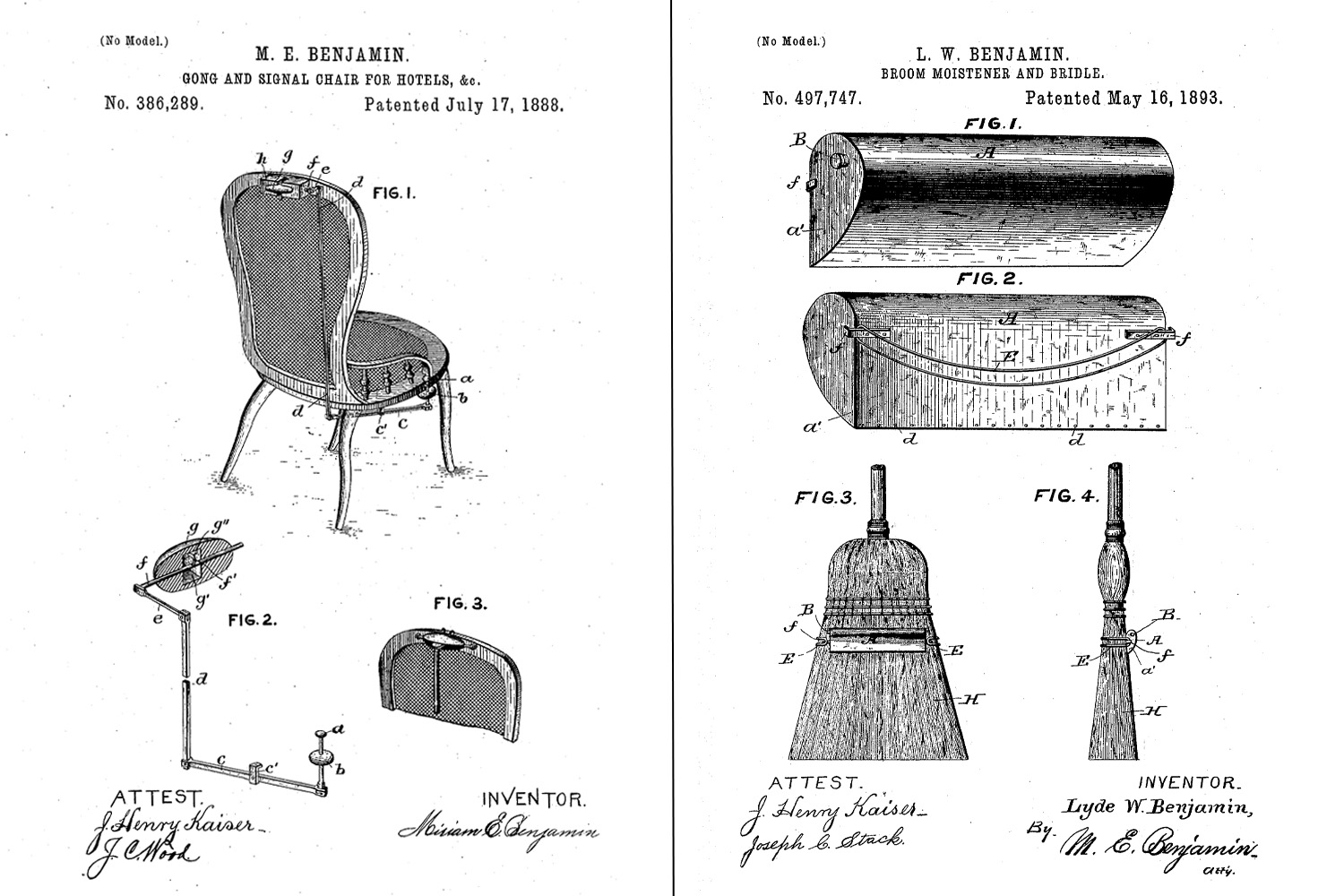
Miriam Benjamin likely received her legal training informally, through her own experience as a patent applicant and from her brother, Edgar, who was a practicing lawyer.
Today, historians benefit from easy access to census data, something Henry Baker did not have when conducting his research. Census data can tell us not only where a person lived, but vital information about their race, age, education, and changes over time. It’s thanks to census data, for example, that we know the value of James Wormley’s estate ballooned from $4,000 in 1860 to $76,000 in 1870. The 1920 census lists Benjamin’s occupation as a patent attorney, revealing her career change from education into being one of the first Black women to practice patent law. Historical census data is a treasure trove of information at our fingertips, thanks to hard-working civil servants like Robert Pelham.
In 1859, Robert Pelham, Jr. was born in Petersburg, Virginia, just 130 miles south of Washington, D.C. But the course of his life would take him several states away for several decades before his return to the capital region. The Pelham family moved to Detroit shortly after Robert’s birth, as his parents sought more educational opportunities for their children than allowed by the strict literacy laws for African Americans in pre-Civil War Virginia. Pelham began his career as a journalist, and he and his brother were founders of the Detroit Plaindealer, one of the first successful newspapers serving the Black community in the city. He used the publication to amplify the voices of leading African American civil rights leaders and continued to be involved in the civil rights movement throughout his life.
Pelham moved into civil service in the late 1880s — first as an oil inspector in Michigan, then on to several national appointments. He spent nearly three decades at the U.S. Census Bureau, determined to succeed as a civil servant from the outset of his career.
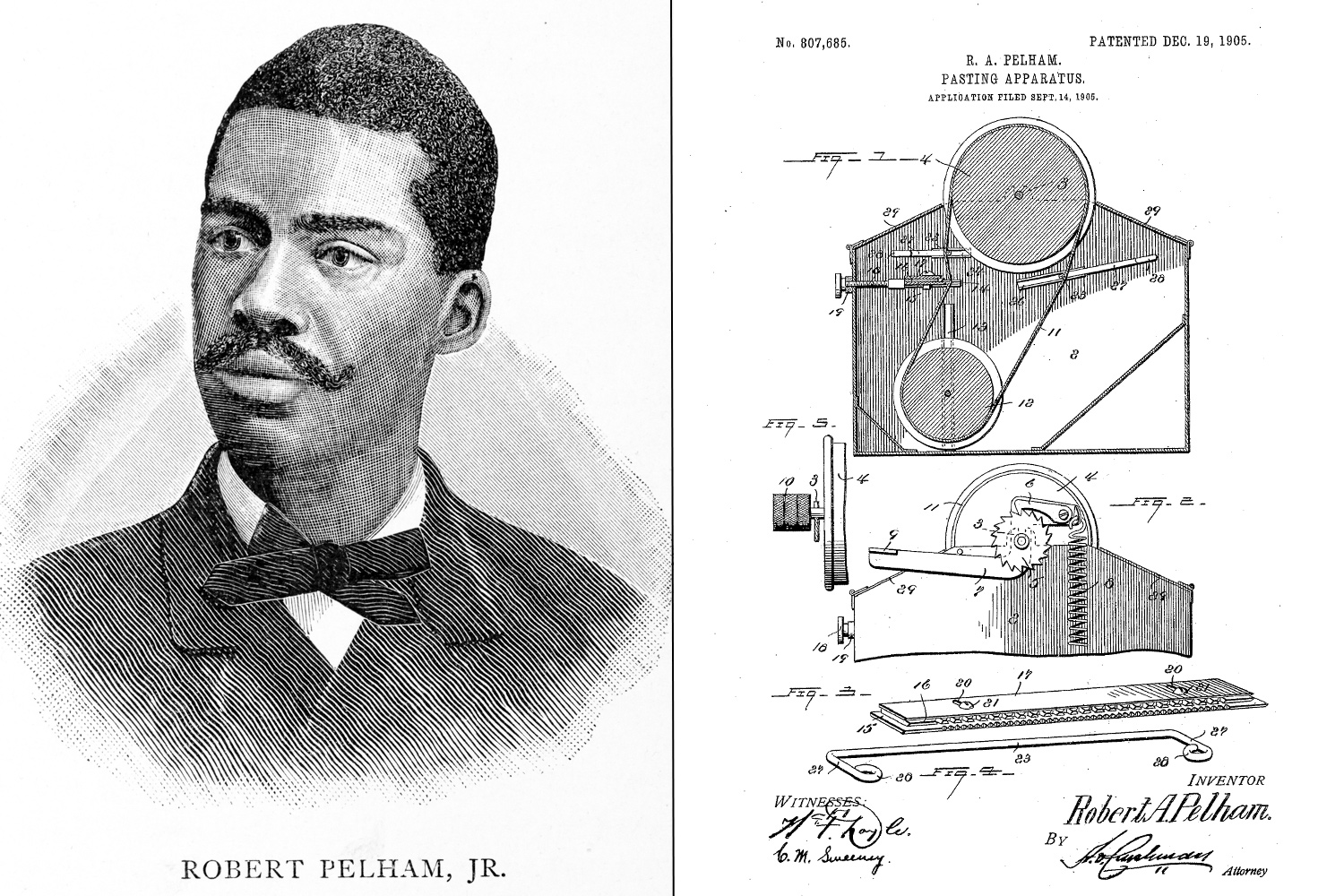
Pelham’s pasting machine increased efficiency at the Census Bureau, which had just been established as an independent agency in 1902.
(Image of Pelham courtesy of Wikimedia Commons).
Much like the right to intellectual property, the requirement for an “enumeration” of the United States’ population to be carried out every ten years is enshrined in the U.S. Constitution. The federal government completed its first census in 1790 (the same year the first U.S. patent was granted) and has carried out a census every ten years since.
Tabulating census data was, and remains, a major undertaking. Exponential population growth in the latter half of the 19th century made it even more complex in an era before computers. The population hovered at just under 4 million in 1790. By 1900, it exploded to over 76 million. Patented inventions like Herman Hollerith’s tabulation device made processing the massive amount of data easier, but tabulating was still tedious, repetitive work.
Henry Baker noted that Pelham “seemed anxious to get through his job quickly” and turned to invention as a means of achieving this goal. In 1905, Pelham patented a pasting apparatus that applied adhesive to strips of paper. Before Pelham’s pasting apparatus, a Census department clerk had to manually paste statistical slips on sheets and organize them. It was messy and required multiple employees. Pelham’s invention automated this process, and according to Baker, the Census Bureau paid him a royalty for his invention’s use in addition to his salary. He later invented a tallying machine in 1913.
Like Baker, Pelham also contributed to our modern understanding of Black history. In 1918, he co-authored a report that used census data to show evidence of the Great Migration, a mass movement of African Americans from the rural South to cities in the North and West.
The cause of this massive demographic shift? Deteriorating conditions for Black Americans across the South due to the end of federal Reconstruction efforts, a rise in white terrorism, and legally codified segregation.
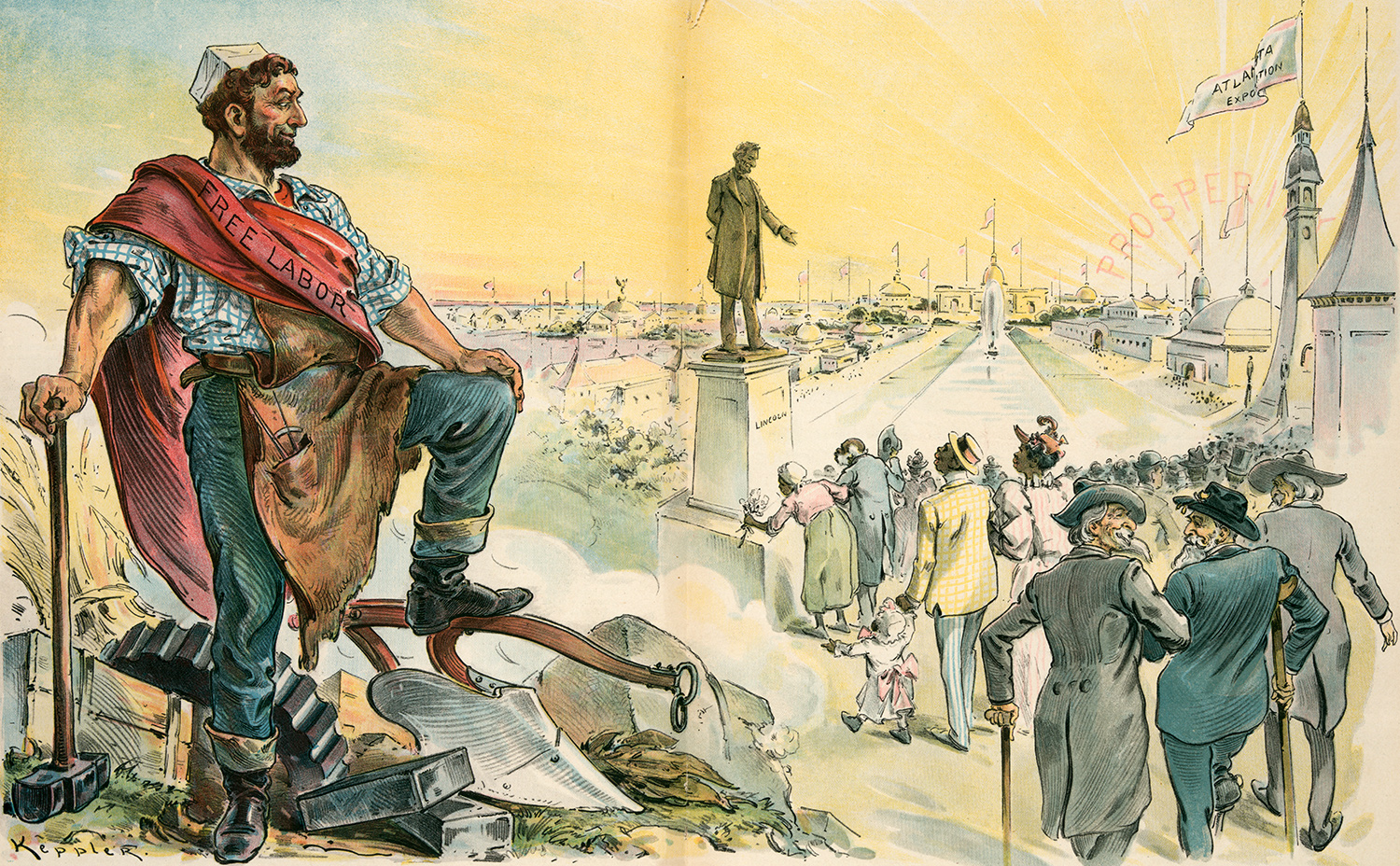
This depiction of the Cotton States International Exposition highlights many of the contradictions inherent in the New South. African American fairgoers lay flowers at the base of a statue of Abraham Lincoln while an aging U.S. veteran of the Civil War links arms with a former Confederate soldier. Prosperity through free labor is promised, but unfair sharecropping practices and Jim Crow laws kept success out of reach for many Black citizens.
(Courtesy of the Library of Congress).
Decisions made in Washington, D.C. following a fraught presidential election had ramifications for Black Americans, both in the city and across the nation.
At first glance, the scene on the evening of February 26, 1877, was a common one: a group of prominent politicians converged for a meeting. Their chosen venue? The comfortable rooms of Washington, D.C.’s Wormley Hotel.
The White House — and the presidency — loomed large in the lawmakers’ conversation, and not just because of its proximity.
The Election of 1876 was one of the most contentious in American history. Marking 100 years since the Declaration of Independence was penned, the nation was still recovering from its most difficult trial, the Civil War. Four million African Americans obtained their freedom in 1865, with the rights of citizenship conveyed in the following years, but the process of rebuilding society around free labor was not a smooth one. White supremacist backlash against Reconstruction was strong, and this was one of many contentious issues on the ballot in 1876 alongside the candidates.
Democrat Samuel Tilden led Republican Rutherford B. Hayes in the popular vote, but neither candidate held enough electoral votes to secure the election. Nineteen electoral votes, all from Southern states, were still in flux. Congress eventually awarded those votes to Hayes, but not before months of ambiguity had triggered a constitutional crisis.
It was during this period of uncertainty that four Southern Democrats met with five Ohio Republicans at the Wormley Hotel, and rumors swirled about a bargain to put Hayes in the White House being struck behind closed doors. Hayes was inaugurated the next month, and with his presidency, federal intervention in protecting the rights of Black citizens in the South largely ceased.
In actuality, the lawmakers likely decided very little during what is now referred to as the “Wormley Accord” or “Wormley Agreement.” But it is deeply ironic that the name of a Black entrepreneur was linked to the end of political reconstruction, an historic event that had massive, negative ramifications for African Americans.
Throughout the next several decades, voter suppression and threats of violence stripped voting rights from African American men across the South, ripping away the tenuous foothold Black communities had established in politics following the Civil War. States and localities enacted strict laws segregating public spaces, widely known by the moniker “Jim Crow.” These laws were codified nationally in Plessy v Ferguson, a Supreme Court case that established facilities could be separated by race as long as they were equal. In reality, they rarely were.
This legal backlash was accompanied by a cultural one, as damaging stereotypes about African Americans ran rampant in newspapers, literature, and artistic endeavors across the country. In his 1913 essay, “The Colored Inventor: A Record of Fifty Years,” Henry Baker wrote: “[A]mple evidence is at hand to show a rather widespread disposition to magnify the vices and minimize the virtues of the American-Negro.” Hatred fed fear, and fear fed violence, with a resurgence in terrorist groups like the Ku Klux Klan. The first decades of the 20th century marked a nadir of race relations in the United States.
In response, African Americans with the means to do so began to leave the rural South, moving into cities like Washington, D.C. But the nation’s capital faced its own issues with segregation and racial violence.
In 1909, Robert Pelham witnessed a disturbing scene: a white police officer brutally beating a Black woman he was arresting. Pelham began gathering the names of those nearby, recognizing the potential need for witnesses, but when the police officer noticed his actions, he arrested him as well. Likely using his connections as a member of the civil service, Pelham retained Senator William Alden Smith as his legal counsel and the court acquitted him. But the incident served as one example of racial violence and injustice faced by the city’s residents.
The Black community in Washington, D.C. responded to these challenges with organized action, and the inventions of James Wormley, Miriam Benjamin, and Robert Pelham contributed to the growing civil rights movement. Baker created his list, in part, to counteract prevailing racist mythologies in public discourse at the time. By providing hundreds of examples of innovations deemed novel and new by the federal government, Baker helped shine a light on the many positive contributions African Americans were making to societal progress. Prominent civil rights leaders at the time used his work, and his list was reprinted well into the 20th century. Today, we continue to reference his list for its immense contribution to our understanding of innovation throughout American history.
“These facts ought clearly to show that under favorable environment the Negro is capable of performing his whole duty in the work of mankind, whether it be tilling the earth with his hoe or advancing the world by his thought.”
Details of Miriam Benjamin’s later life are as limited as her early years, but we know that she continued to invent. In 1917, she received another patent for a sole for footwear, which contained a powdered material intended to prevent disease, promote the circulation of blood, and keep feet warm. She also lent her creativity to the field of composition, publishing music under the pseudonym E.B. Miriam. She died in Boston in 1947, a trailblazer in both invention and patent law.
In both his career as a civil servant and his involvement in community organizations, Robert Pelham strove for excellence. He served on the leadership committee for the American Negro Academy, a scholarly society for Black intellectuals, and managed the Washington Tribune, a D.C.-based Black newspaper, later in his career. He died in 1943, in his Washington, D.C. home, an inspiration for his four children and grandchildren, many of whom went on to have careers in public service.
The legacy of service was also passed down within James Wormley’s family. Today, the great-great grandson of a successful hotelier in the President’s neighborhood serves the President directly as the Deputy Secretary of Commerce. Don Graves says of his family history, “I am a proud descendent of James Wormley, so I know firsthand how important it is to support minority entrepreneurs, innovators, and businesses.”
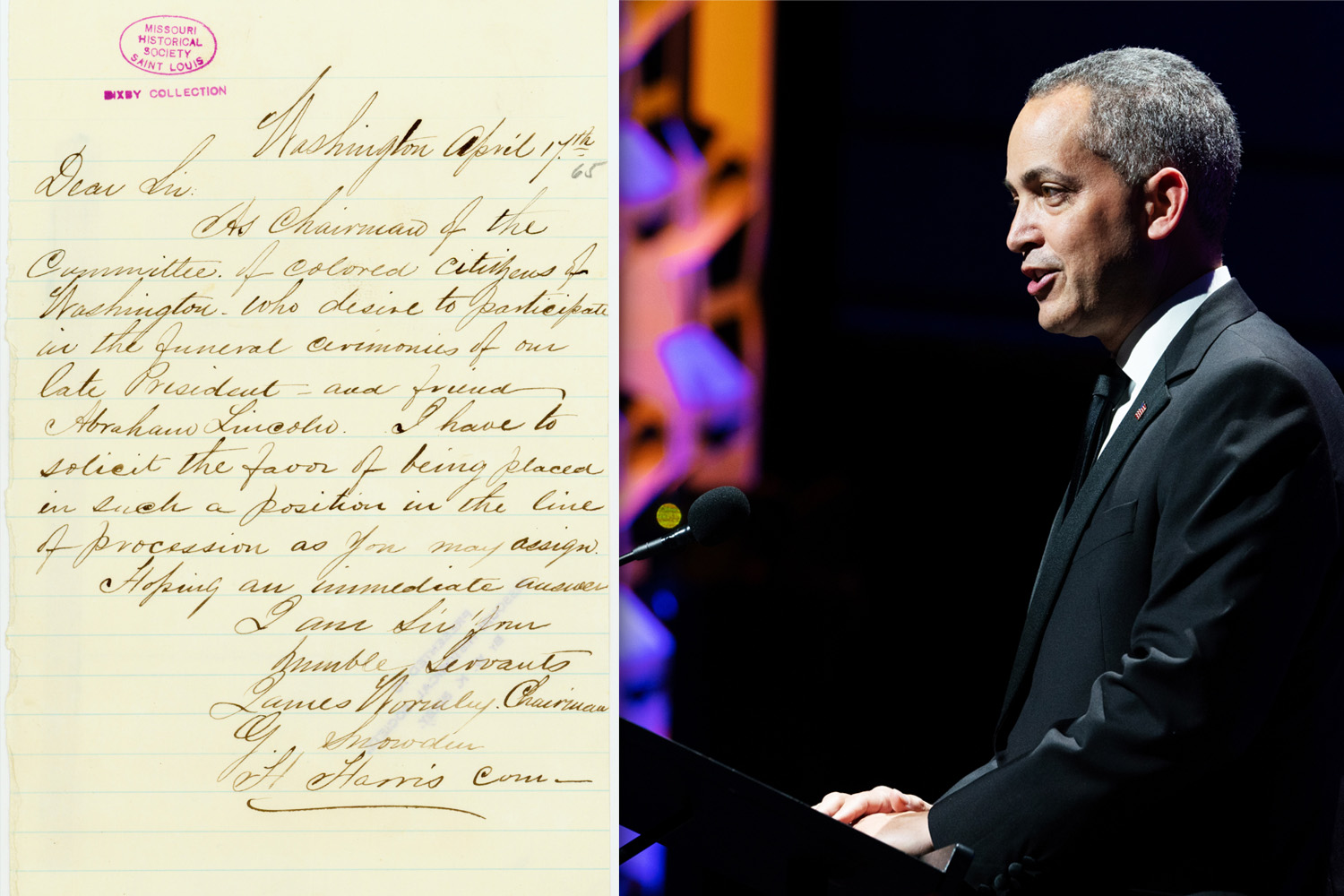
In 1865, James Wormley offered his services in a funeral procession for President Abraham Lincoln as the Chairman for the Committee of Colored Citizens of Washington. One hundred and fifty-eight years later, Don Graves, a descendant of Wormley, speaks at the National Inventors Hall of Fame Induction Ceremony.
(Letter courtesy of the Missouri Historical Society. Photo of Don Graves courtesy of USPTO/Jay Premack).
Like many on Baker’s list, Wormley, Benjamin, and Pelham did not make their living solely on their patents, nor did they invent for the sake of inventing. They saw a problem and, using their ingenuity and skills, sought a solution.
Their inventions are part of a larger story. A story of determined individuals who sought to make their community better, who overcame challenges to make opportunities for themselves and others, and who, through their own action, ensured their names would not be forgotten.
Credits
Produced by the USPTO’s Office of the Chief Communications Officer. For feedback or questions, please contact inventorstories@uspto.gov.
Story by Rebekah Oakes. Contributions by Whitney Pandil-Eaton and Eric Atkisson. Special thanks to Deputy Secretary Don Graves, the National Archives and Records Administration, and the U.S. Census Bureau.
References
Baker, Henry E. The Colored American (Washington, D.C.) “Inventions of the Negro: Devices Designed by Them on File in Washington.” (November 14, 1903).
Baker, Henry E. The Colored Inventor: A Record of Fifty Years. Project Gutenberg, 2007.
Baker, Henry E. The Washington Bee (Washington, D.C.) “Colored Inventors: Henry E. Baker Furnishes the Bee a List – What the Race is Doing.” (April 27, 1889).
Birchfield, James. The Star Magazine (Washington, D.C.) “Odyssey Of the Civil Service Commission” (September 14, 1958)
The Boston Daily Globe (Boston, MA) “World Theirs.” (September 28, 1895).
Brownsville Daily Herald (Brownsville, Texas) “Waited 24 Years For Pay: Woman’s Successful Effort to Get a Congressman His Salary.” (June 22, 1906).
Department of the Interior: Patent Office. Records Relating to Colored Inventors, 1899-1921. National Archives and Records Administration, College Park, MD.
Evening Star (Washington, D.C.) “Congressmen and their Residences” (December 13, 1879).
Foner, Eric. A Short History of Reconstruction. New York: Harper Perennial, 1990.
Graves, Donet D., Esq. “Wormley Hotel.” The White House Historical Association. (Accessed December 12, 2023): https://www.whitehousehistory.org/wormley-hotel-1
Khan, Zorina. “A Pioneering Black Woman Patent Attorney.” Bowdoin College. (Accessed January 4, 2024): https://research.bowdoin.edu/zorina-khan/of-patents-and-prizes/black-wo…;
Parker, J.B. Harrisburg Telegraph (Harrisburg, PA). “Father of the Fair: Colonel Hemphill Originated the Atlanta Exposition Idea.” (September 26, 1895)
Proctor, John Clagett. The Sunday Star (Washington, D.C.) “Along Early Fifteenth Street” (December 19, 1943).
“Robert A. Pelham Jr.: Newspaper Editor, Activist, Career Census Supervisor.” U.S. Census Bureau. (Accessed January 15, 2024): https://www.census.gov/history/pdf/robert-a-pelhamjr.pdf
Sluby, Patricia Carter. The Inventive Spirit of African Americans. Westport: Praegar, 2004.
Woodson, C.G. The Wormley Family. Negro History Bulletin, Vol. 11, No. 4 (January 1948).
Woodward, C. Vann. Reunion and Reaction: The Compromise of 1877 and the End of Reconstruction. New York: Oxford University Press, 1966.


